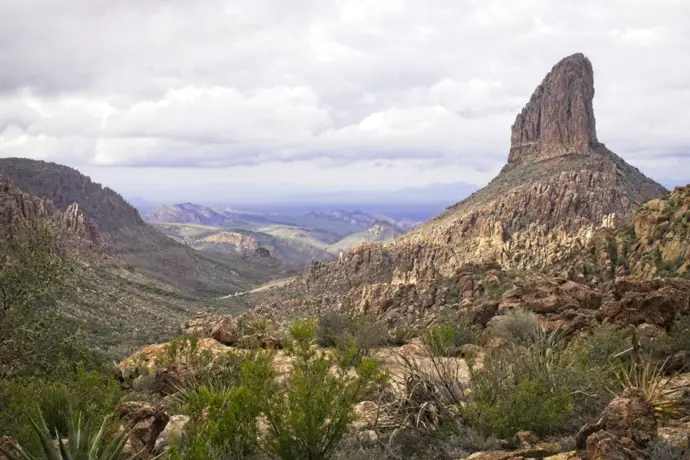Backpacking is a popular outdoor recreational activity that challenges a person’s physical and mental fortitude all while offering the reward of beautiful scenery. Arizona is particularly popular for backpackers thanks to our countless scenic destinations, including the famous Grand Canyon.
In this article, we will discuss seven crucial tips to keep in mind when preparing for your backpacking trip here in Arizona. Above all else, being prepared is the best way to ensure the most enjoyable and safe backpacking trip possible.
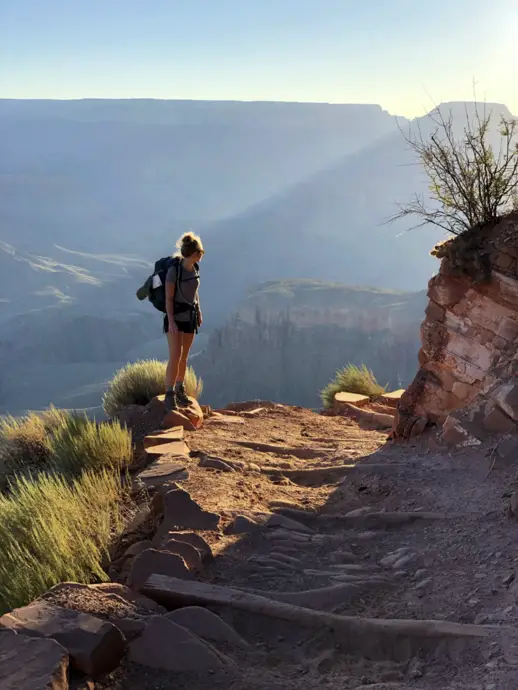
Make a Comprehensive Checklist of Essentials
There are many items that need to come with you on a backpacking trip, and each is just as important as the next. With the sheer quantity of gear you may need to carry, it is crucial to have a complete checklist that you can refer back to while packing.
According to popular outdoor recreation retailer REI, there are 10 essentials for any backpacking trip. They are:
- Navigation materials such as a map, compass, and GPS device
- Headlamps with extra batteries
- Sun protection such as sunscreen and sunglasses
- First aid kits that include foot care and insect repellant
- A quality outdoor knife and gear repair kit
- Fire making materials such as matches, tinder, a lighter, or a stove
- Shelter of some kind such as tents, tarps, or hammocks
- Extra food – backpackers will likely eat more than normal while on the trail
- Extra water – having sufficient water bottles and water purification kits is essential
- Extra clothes – Arizona weather can fluctuate, and you need clothes for all purposes
When backpacking, it is far better to be over prepared rather than underprepared, so ensuring you have the proper supplies and all ten of the aforementioned essentials is of the utmost importance. Thus, creating a checklist of everything needed is also essential to ensure nothing is forgotten and backpackers are well prepared to maintain their health and well-being.
Break Your Shoes in Beforehand
It is crucial to do your gear shopping well before the start of the backpacking trip so that new gear can be well broken-in before heading out on the trail. This is especially true when it comes to your hiking shoes or boots. Wearing brand new shoes on a backpacking excursion will lead to unfortunate and unpleasant consequences for your feet and can even result in serious injury that can cut the whole trip short.
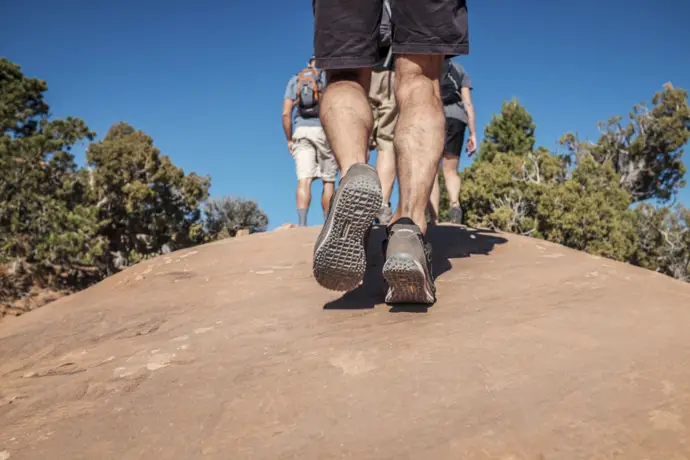
According to an article on 5best, hiking shoes or boots should be broken in for a minimum of one week before heading out on a trip, but ideally should be broken in for at least five weeks beforehand. New shoes have a stiffness that can lead to painful blisters, chafing, and sores on the feet.
Shoes can be broken in by wearing them around the house while doing chores or while running errands. Additionally, to minimize the overall stiffness, you can bend and flex the shoes with your hands to help increase the flexibility of the soles.
“Be Bold, Start Cold”
Like many places, Arizona’s mornings can start out considerably cold until the sun fully rises and begins to heat the air. Because of this, it can be tempting to dress heavier when starting out your hike in the morning. However, this should be avoided as the body will quickly heat up while hiking and carrying a heavy backpack.
The idea of “be bold, start cold” means to not wear unnecessary layers at the beginning of a hike. While layers are crucial for the times of relaxation or at night when the body is not moving, wearing too many layers while actually hiking can cause the body to become easily overheated.
The phrase is popular with many experienced backpackers, and for good reason. Understanding how your body is exerting energy and heating itself at various points of your backpacking trip is crucial to knowing how to properly dress yourself.
Learn the Leave No Trace Principles
Being mindful and respectful of your natural surrounding while backpacking is key to preserving and protecting the environment so it can continue to be enjoyed. Leave No Trace is an organization that aims to educate and provide resources for the public in regards to outdoor ethics.
There are 7 principles of Leave No Trace that detail how to properly behave in the wilderness to leave as little impact as possible. They are:
- “Plan ahead and prepare
- Travel and camp on durable surfaces
- Dispose of waste properly (take out whatever you take in)
- Leave what you find
- Minimize campfire impacts
- Respect wildlife
- Be considerate of other visitors”
Understanding and following each of these principles is the best way to keep our natural spaces in good shape and available for public use. These principles should be respected and kept in consideration at all times, as they are essential for the conservation of our environment.
Pack Lots of Snacks
We have already covered the importance of packing more food than you think you may need. It is also highly important to have quick and easily accessible snacks readily available for consumption. The reality of backpacking is that eating only at mealtimes will not be enough to fuel your body through the physical exertion required of this outdoor activity.
As for selecting snacks, you will want to choose items that have high nutritional value that can keep you energized throughout the day. Dried fruits or vegetables and peanut butter are great examples of snacks that will help to keep your energy up without causing unnecessary disruptions to your digestive system.
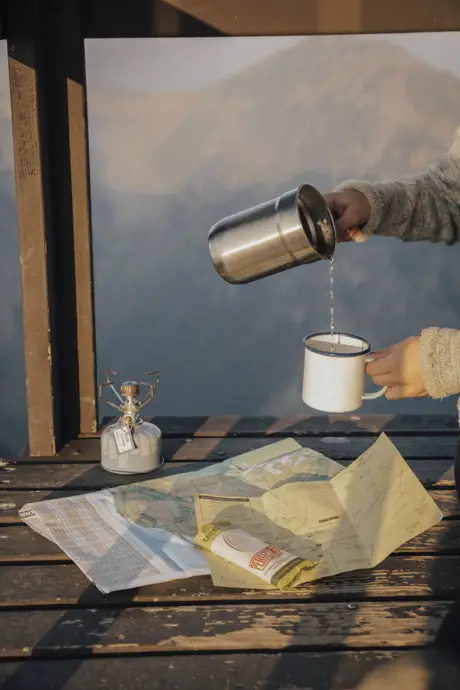
Ideally, you want to avoid food items that produce large amounts of waste, as you will have to then carry that waste with you in order to prevent environmental harm from littering.
The important thing when it comes to food is to listen to your body. An undernourished or hungry body can lead to health complications and illness while on the trail. Keeping yourself well-fed is essential for staying energized and ready to face the day.
Keep Arizona’s Weather in Mind
When hiking here in Arizona, weather and daily temperatures are major factors for you to consider when choosing the dates for a backpacking trip. Arizona becomes extremely hot and dry during the summer months, with many days having a high of 100 degrees Fahrenheit or hotter.
The times of year that are most recommended for backpacking in Arizona are during the seasons Spring and Fall. Temperatures are much cooler and handleable during these times, though it should be noted the canyons are at risk of dangerous flash floods between July and September.
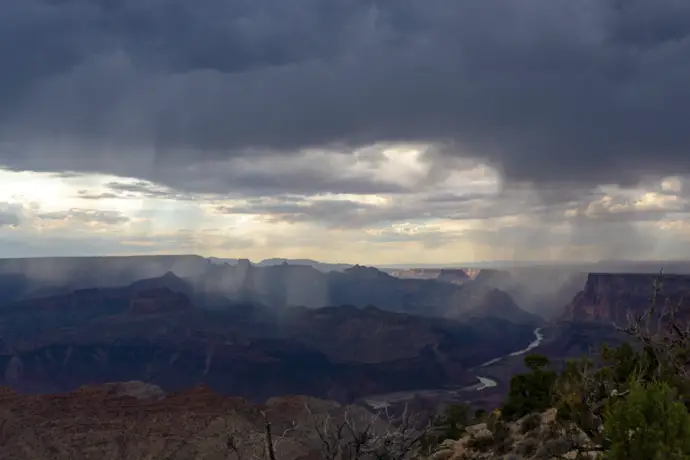
Be Alert to Arizona’s Wildlife
In any outdoor setting, you should be aware of what wildlife you may encounter. Arizona has a wide variety of critters that are best to be avoided. Being respectful to wildlife is even one of the 7 Leave No Trace principles and is essential for having safe encounters with wild animals you meet in the outdoors.
There are sixteen animals to be particularly aware of, including:
- rattlesnakes
- Gila monsters
- Africanized honeybees
- bark scorpions
- coral snakes
- giant desert centipedes
- brown spiders
- black widows
- Sonoran Desert toads
- blister beetles
- black bears
- kissing bugs
- mountain lions
- tarantula hawks
- coyotes
- wolves
Final Thoughts
Being well prepared for a backpacking trip in Arizona is key to getting the most out of the experience and having the most enjoyable time possible. Following the tips we have listed here is majorly important for ensuring your safety and well-being while on the trail. Have any tips to share with fellow hikers? Share them below in the comments!

